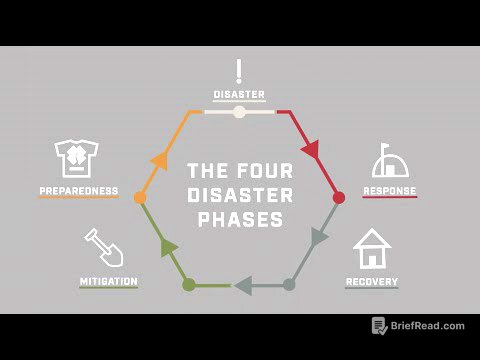TLDR;
This video reports on the tragic crash of Air India flight 171 shortly after takeoff from Ahmedabad, India, bound for London Gatwick. The crash resulted in over 290 fatalities, including passengers and people on the ground, as the plane struck a residential area. Amidst the devastation, one passenger miraculously survived. The incident has prompted a full inquiry by the Indian government and offers of assistance from the UK. The discussion includes initial reactions, potential causes, and the implications for Air India and Boeing.
- Air India flight 171 crashed shortly after takeoff, killing over 290 people.
- The crash site was in a residential area, impacting a medical college.
- One passenger, Vishwashkumar Ramsh, survived the crash.
- The Indian government has promised a full inquiry into the incident.
- The UK is providing support and assistance to those affected.
Air India Flight 171 Crash [0:01]
Air India flight 171, en route to London Gatwick, crashed seconds after taking off from Ahmedabad International Airport. The plane lost altitude and crashed just outside the airport perimeter, resulting in a large plume of black smoke. The crash has shocked India, with many people filming the aftermath.
Eyewitness Accounts and Rescue Efforts [0:48]
A local resident described the sound of the crash as being like a storm. Part of the plane became lodged in a building, with debris scattered across the streets. There were 242 people on board, including 11 children, with 169 Indian nationals and at least 53 British citizens among them. Rescuers and residents worked together to clear the rubble and search for survivors, finding one survivor amidst the devastation.
The Miraculous Survivor [1:42]
Vishwashkumar Ramsh, a British passenger who was seated in 11A, survived the crash. He contacted his family in the UK shortly after the incident. Despite his survival, police confirmed that over 290 people had died, including nearly all those on board and dozens on the ground, as the plane crashed into a residential area, hitting a hostel housing medical students.
Investigation and Historical Context [2:37]
Air traffic control reported that Air India flight 171 departed at 1:39 local time and issued a Mayday call. The signal was lost shortly after takeoff at 625 ft. The plane crashed in Mani Nagard, south of the airport, hitting several buildings of the BJ Medical College. This is one of the worst airline disasters in recent years for India. In 2010, an Air India Express flight crashed in Mangalore, killing 158 people. Air India, previously under government control and criticised for mismanagement, was taken over by the Tatar group three years prior to revamp the carrier. The crashed aircraft was a Boeing 787 Dreamliner, marking the first time this model has been involved in a crash. The Indian government has promised a full inquiry into the incident.
Gatwick Airport Response and Official Statements [4:13]
Gatwick Airport has set up a reception centre for relatives of those on board to provide information and support. People have been laying flowers near the runway to pay their respects. All Air India flights at Gatwick Airport are currently suspended. The Foreign Office has established crisis teams in India and London, with dedicated phone lines to assist those affected. The Prime Minister expressed condolences and confirmed that an investigation team has been dispatched, led by the Foreign Secretary. The King expressed his shock and offered sympathy to the families and friends of those affected. The UK Air Accidents Investigations branch has offered assistance to investigators in India.
Expert Analysis and Potential Causes [6:00]
Aviation expert Dr. Vanana Singh described the crash as a tragic day for India, with a significant ripple effect on affected families. The aircraft crashed into a medical college, injuring and killing students. Retrieving the black box from the tail end of the plane, embedded in a building, should reveal crucial information. A potential cause being considered is a total electrical failure. Despite the Boeing 787 Dreamliner having a robust and safe history, the expert noted that something catastrophic must have gone wrong. Social media footage showed the flaps were flat instead of pointing down for upward lift, which is unusual during takeoff. The numerous warning signals that should have been triggered before takeoff raise questions about why the pilot proceeded. The survival of the passenger in seat 11A is considered a miracle, given the potency of aviation fuel.









